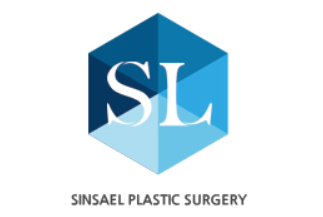Eye Bag Removal in Korea, Seoul, Gangnam
SINSA L Plastic Surgery
Why Choose an Eye-Specialized Clinic? (Plus Cost Estimates)
At a Glance
- Best for: Persistent under-eye puffiness (eye bags) with or without a tear-trough groove
- Core methods: Transconjunctival (inside the lid, no skin scar) or Subciliary (fine line under lashes) lower blepharoplasty, often with fat repositioning / septal reset
- Support procedures: Canthopexy/canthoplasty for lid support; skin-pinch for crepe skin
- Typical stay for visitors: 7–10 days in Seoul for stitch removal and early aftercare
Why Korea — and Why an Eye-Specialized Clinic?
1) High-volume expertise
Korean periorbital surgeons perform large case volumes, refining fine details like fat repositioning (not just removal) and lid support. More repetition → more consistent, natural results.
2) Subspecialized planning (eyes first)
An eye-focused clinic looks at the entire lid unit—crease height, lid margin, corners (canthi), and the lid–cheek junction—so you avoid hollowness, rounding, or over-tightening.
3) Modern, structure-preserving techniques
Best-practice today is preserve & move fat to fill the groove (tear trough), not “scoop it out.” Septal reset, SOOF/midface support, and canthopexy protect shape and longevity.
4) Predictable recovery & traveler-friendly care
Clear English guidance, photo consults, printed aftercare, and schedules designed for fly-in patients (stitch-out ~day 5–7, social downtime ~7–10 days).
5) Value without cutting corners
Compared to many countries, Korea offers competitive pricing for surgeon-led care with hospital-grade protocols and meticulous closure/scar strategy.
What “Eye-Specialized” Means in Practice
- Precise measurements: lid height (MRD2), canthal tilt, snap-back/distraction tests for lid tone
- Method fit to anatomy: transconjunctival for good skin quality; subciliary when you also need skin handling
- Fat repositioning / septal reset: smooths the lid–cheek step-off instead of hollowing the lid
- Corner support: canthopexy/tarsal strip added when laxity risks rounding or retraction
- Plan for skin quality: selective skin-pinch or staged light resurfacing for crepe lines
- Safety: conservative hemostasis, ocular-surface protection, structured follow-ups
Technique Overview
- Transconjunctival lower blepharoplasty – From inside the eyelid; no external skin scar. Ideal when skin is decent and the main issue is fat bulge.
- Subciliary lower blepharoplasty – A fine line below lashes; lets the surgeon treat skin/muscle and perform a skin-pinch if needed.
- Fat repositioning / Septal reset – Moves bulging fat forward to fill the groove (tear trough/palpebromalar) for a smooth transition.
- Canthopexy / Canthoplasty – Supports or reshapes the outer corner to protect lid position and avoid a “round eye.”
Who’s a Good Candidate?
- Under-eye puffiness that doesn’t improve with sleep
- A visible bulge + groove/shadow (tear trough)
- Mild–moderate lower-lid skin laxity or fine lines
- Realistic expectations and willingness to follow aftercare
Cost Estimates
Final fees depend on your anatomy, method, and whether support/skin work is needed. Ranges below are typical surgeon fee + facility + anesthesia in KRW.
- Transconjunctival Lower Blepharoplasty: ₩1.8M–₩3.5M
- Subciliary Lower Blepharoplasty (with skin handling): ₩2.5M–₩4.8M
- Under-Eye Fat Repositioning / Septal Reset (add-on): ₩0.8M–₩1.8M
- Canthopexy / Canthoplasty (if needed): ₩0.8M–₩1.5M
- Revision Lower Blepharoplasty: ₩3.5M–₩6.5M
Example Scenarios
- A. Eye bags, good skin (most common):
Transconjunctival + fat repositioning → ~₩2.6M–₩5.3M - B. Bags + crepe skin/laxity:
Subciliary + skin-pinch + fat repositioning (± canthopexy) → ~₩3.3M–₩6.6M - C. Lax lower lid or prior surgery rounding:
Lower bleph + fat repositioning + canthopexy/tarsal strip → ~₩3.6M–₩6.8M - D. Revision / complex contours:
Re-entry + septal reset + support → ~₩4.0M–₩7.5M
What changes price?
Anatomy (skin quality, laxity), technique (inside vs skin incision),
add-ons (fat repositioning, canthopexy),
revision status, and OR time.
Travel Timeline
- Day 0: Surgery (60–120 min). Discharge same day.
- Days 1–3: Peak swelling/bruise; cool compresses, head elevated.
- Day 5–7: Stitch removal (if subciliary).
- Day 7–10: Comfortable socially (concealer OK).
- Weeks 3–6: Refinement; contour smooths.
- Months 3–6: Final result and scar maturation.
How to Get a Personal Estimate
Email or upload:
- Photos: front, 45°, side (neutral face), plus a gentle smile
- Any prior eyelid procedures or fillers (dates, products)
- Your timeline (arrival/departure) and preference for minimal downtime vs maximum longevity
- Medical notes: dry eye, contact lenses, allergies, blood thinners
You’ll receive a provisional plan (technique + add-ons), fee range, and a 7–10 day aftercare calendar tailored to your trip.
FAQs
Will I look hollow after surgery?
Not with
fat repositioning and conservative reduction. The goal is a smooth, youthful lid–cheek line.
Is there always a scar?
Transconjunctival has
no external skin scar.
Subciliary hides as a fine line under lashes and typically heals well.
Can filler replace surgery?
Filler can help
mild hollows. It cannot remove
bulging bags and may worsen puffiness—surgery is the definitive fix for structural bags.
When can I wear makeup or contacts?
Usually after medical clearance post stitch-out (if any) and when swelling settles.
How long do results last?
Often
years; aging continues, but structural issues (fat bulge + groove) are corrected.

